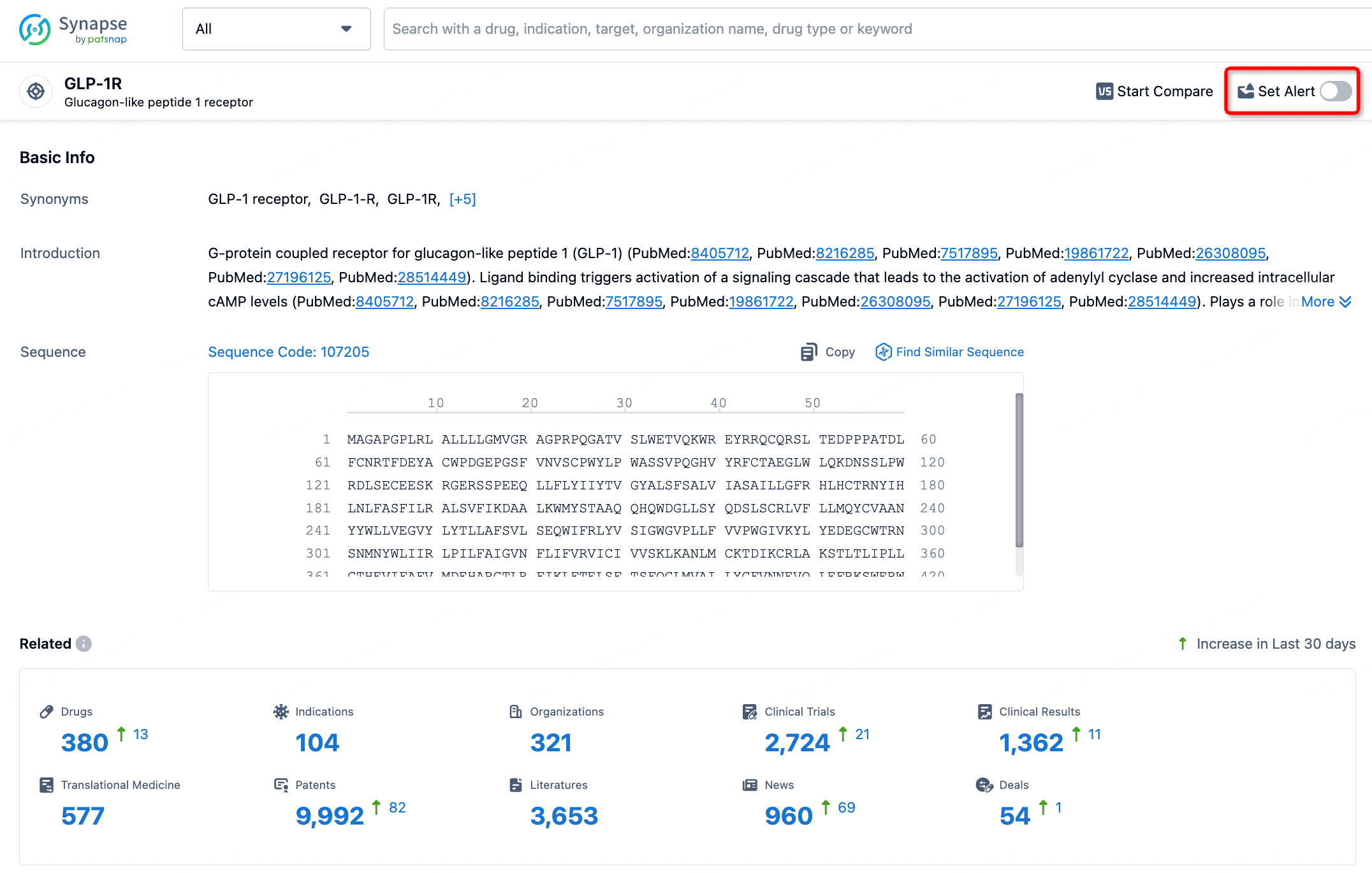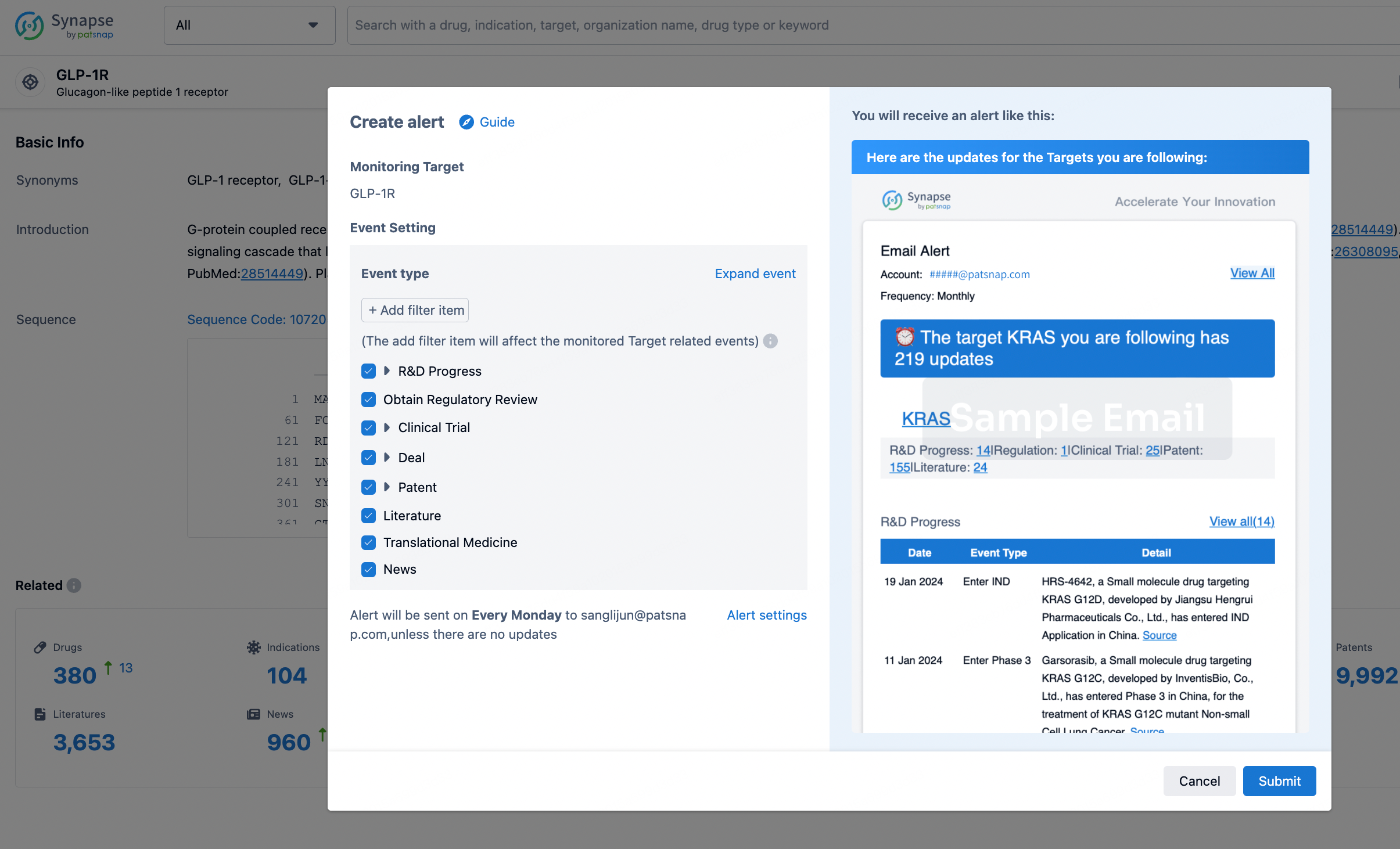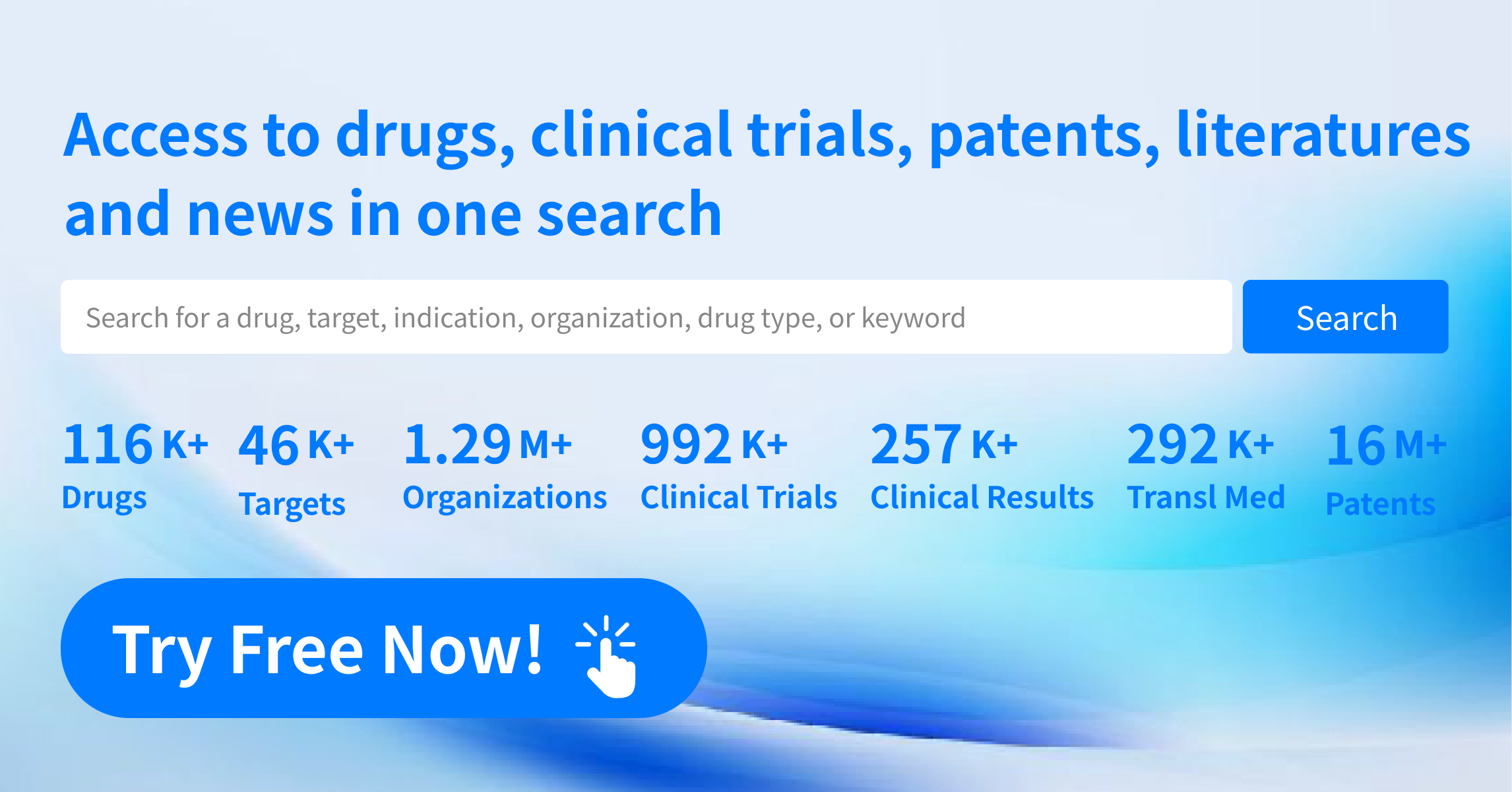Request Demo
What are HIF-2α inhibitors and how do they work?
21 June 2024
Hypoxia-inducible factors (HIFs) are transcriptional regulators that respond to changes in oxygen levels within the cellular environment. Among these, HIF-2α has emerged as a critical player in various physiological and pathological processes, including tumor progression and vascular development. With the growing understanding of HIF-2α's role in disease, targeted therapeutics known as HIF-2α inhibitors are gaining attention for their potential in treating a range of conditions. This blog post delves into the mechanisms, applications, and current status of HIF-2α inhibitors, offering a comprehensive overview of this exciting field.
HIF-2α inhibitors function by specifically targeting the HIF-2α protein, disrupting its ability to bind with other molecules essential for its activity. Under normal oxygen conditions, HIF-2α is rapidly degraded, but in hypoxic environments, it stabilizes and translocates to the nucleus where it dimerizes with HIF-1β. This complex then binds to hypoxia-response elements (HREs) in the DNA, activating the transcription of various genes involved in processes like angiogenesis, metabolism, and cell survival. HIF-2α inhibitors work by preventing this dimerization or by obstructing the binding of the HIF-2α/HIF-1β complex to DNA, effectively reducing the transcription of these target genes. This inhibition can impede tumor growth, reduce abnormal blood vessel formation, and reprogram cellular metabolism.
One of the most promising applications of HIF-2α inhibitors is in oncology. Tumors often create hypoxic microenvironments that stabilize HIF-2α, leading to the upregulation of genes that promote angiogenesis, metastasis, and resistance to apoptosis. By inhibiting HIF-2α, these drugs can potentially reduce tumor growth and spread, making them a valuable addition to cancer therapy. For instance, belzutifan, one of the leading HIF-2α inhibitors, has shown efficacy in treating renal cell carcinoma, a cancer type commonly associated with mutations leading to HIF-2α stabilization.
Beyond cancer treatment, HIF-2α inhibitors are being explored for their potential in treating other diseases characterized by hypoxia and aberrant HIF-2α activity. Chronic kidney disease (CKD) is one such condition, where hypoxia-induced HIF-2α activity can contribute to disease progression by promoting fibrosis and inflammation. By inhibiting HIF-2α, these drugs could offer a novel approach to managing CKD and possibly slowing its progression.
Moreover, there is significant interest in using HIF-2α inhibitors for the treatment of retinal diseases characterized by abnormal blood vessel growth, such as age-related macular degeneration (AMD) and diabetic retinopathy. In these conditions, hypoxia-driven HIF-2α activity leads to the overproduction of vascular endothelial growth factor (VEGF), resulting in neovascularization and subsequent vision loss. HIF-2α inhibitors could provide therapeutic benefits by reducing VEGF levels and inhibiting abnormal blood vessel formation.
Despite the promising preclinical and clinical findings, the development of HIF-2α inhibitors faces several challenges. One of the primary concerns is the specificity and selectivity of these drugs, as off-target effects could lead to unintended consequences. Additionally, the long-term effects of HIF-2α inhibition need to be thoroughly investigated, given HIF-2α's role in normal physiological processes. Ensuring that these inhibitors can effectively target HIF-2α in the hypoxic microenvironments of solid tumors or fibrotic tissues is another hurdle that researchers must overcome.
In conclusion, HIF-2α inhibitors represent a promising class of therapeutics with potential applications in oncology, chronic kidney disease, and retinal diseases, among others. By specifically targeting the HIF-2α pathway, these drugs can disrupt the hypoxia-driven processes that contribute to disease progression. While challenges remain in their development and clinical application, the continued research and refinement of HIF-2α inhibitors hold great promise for improving the treatment outcomes for patients with these challenging conditions. As our understanding of hypoxia and HIF-2α continues to evolve, so too will the opportunities to harness these insights for therapeutic benefit.
HIF-2α inhibitors function by specifically targeting the HIF-2α protein, disrupting its ability to bind with other molecules essential for its activity. Under normal oxygen conditions, HIF-2α is rapidly degraded, but in hypoxic environments, it stabilizes and translocates to the nucleus where it dimerizes with HIF-1β. This complex then binds to hypoxia-response elements (HREs) in the DNA, activating the transcription of various genes involved in processes like angiogenesis, metabolism, and cell survival. HIF-2α inhibitors work by preventing this dimerization or by obstructing the binding of the HIF-2α/HIF-1β complex to DNA, effectively reducing the transcription of these target genes. This inhibition can impede tumor growth, reduce abnormal blood vessel formation, and reprogram cellular metabolism.
One of the most promising applications of HIF-2α inhibitors is in oncology. Tumors often create hypoxic microenvironments that stabilize HIF-2α, leading to the upregulation of genes that promote angiogenesis, metastasis, and resistance to apoptosis. By inhibiting HIF-2α, these drugs can potentially reduce tumor growth and spread, making them a valuable addition to cancer therapy. For instance, belzutifan, one of the leading HIF-2α inhibitors, has shown efficacy in treating renal cell carcinoma, a cancer type commonly associated with mutations leading to HIF-2α stabilization.
Beyond cancer treatment, HIF-2α inhibitors are being explored for their potential in treating other diseases characterized by hypoxia and aberrant HIF-2α activity. Chronic kidney disease (CKD) is one such condition, where hypoxia-induced HIF-2α activity can contribute to disease progression by promoting fibrosis and inflammation. By inhibiting HIF-2α, these drugs could offer a novel approach to managing CKD and possibly slowing its progression.
Moreover, there is significant interest in using HIF-2α inhibitors for the treatment of retinal diseases characterized by abnormal blood vessel growth, such as age-related macular degeneration (AMD) and diabetic retinopathy. In these conditions, hypoxia-driven HIF-2α activity leads to the overproduction of vascular endothelial growth factor (VEGF), resulting in neovascularization and subsequent vision loss. HIF-2α inhibitors could provide therapeutic benefits by reducing VEGF levels and inhibiting abnormal blood vessel formation.
Despite the promising preclinical and clinical findings, the development of HIF-2α inhibitors faces several challenges. One of the primary concerns is the specificity and selectivity of these drugs, as off-target effects could lead to unintended consequences. Additionally, the long-term effects of HIF-2α inhibition need to be thoroughly investigated, given HIF-2α's role in normal physiological processes. Ensuring that these inhibitors can effectively target HIF-2α in the hypoxic microenvironments of solid tumors or fibrotic tissues is another hurdle that researchers must overcome.
In conclusion, HIF-2α inhibitors represent a promising class of therapeutics with potential applications in oncology, chronic kidney disease, and retinal diseases, among others. By specifically targeting the HIF-2α pathway, these drugs can disrupt the hypoxia-driven processes that contribute to disease progression. While challenges remain in their development and clinical application, the continued research and refinement of HIF-2α inhibitors hold great promise for improving the treatment outcomes for patients with these challenging conditions. As our understanding of hypoxia and HIF-2α continues to evolve, so too will the opportunities to harness these insights for therapeutic benefit.
How to obtain the latest development progress of all targets?
In the Synapse database, you can stay updated on the latest research and development advances of all targets. This service is accessible anytime and anywhere, with updates available daily or weekly. Use the "Set Alert" function to stay informed. Click on the image below to embark on a brand new journey of drug discovery!
AI Agents Built for Biopharma Breakthroughs
Accelerate discovery. Empower decisions. Transform outcomes.
Get started for free today!
Accelerate Strategic R&D decision making with Synapse, PatSnap’s AI-powered Connected Innovation Intelligence Platform Built for Life Sciences Professionals.
Start your data trial now!
Synapse data is also accessible to external entities via APIs or data packages. Empower better decisions with the latest in pharmaceutical intelligence.


